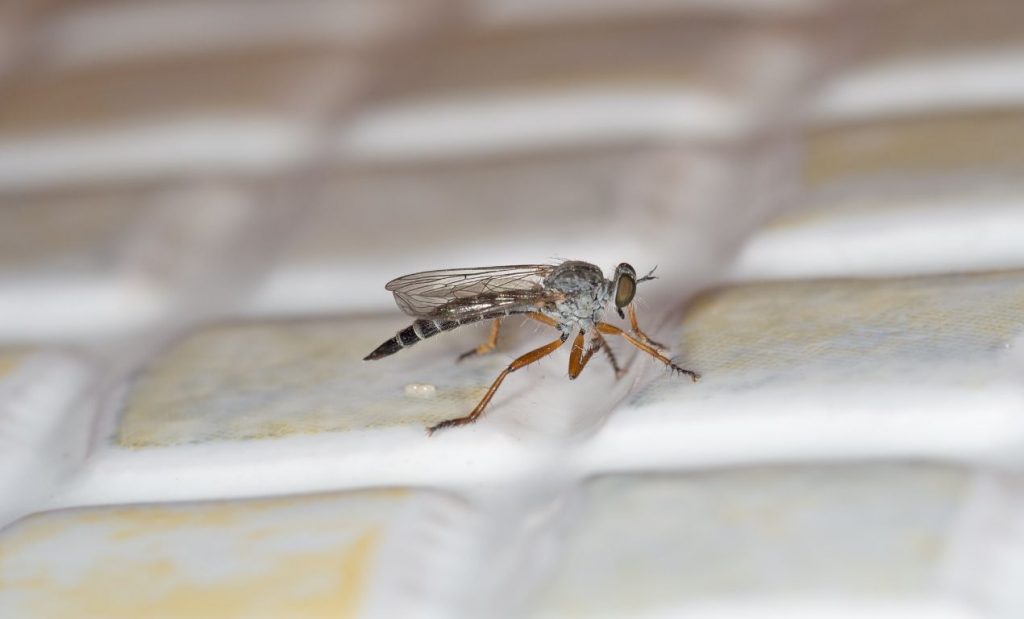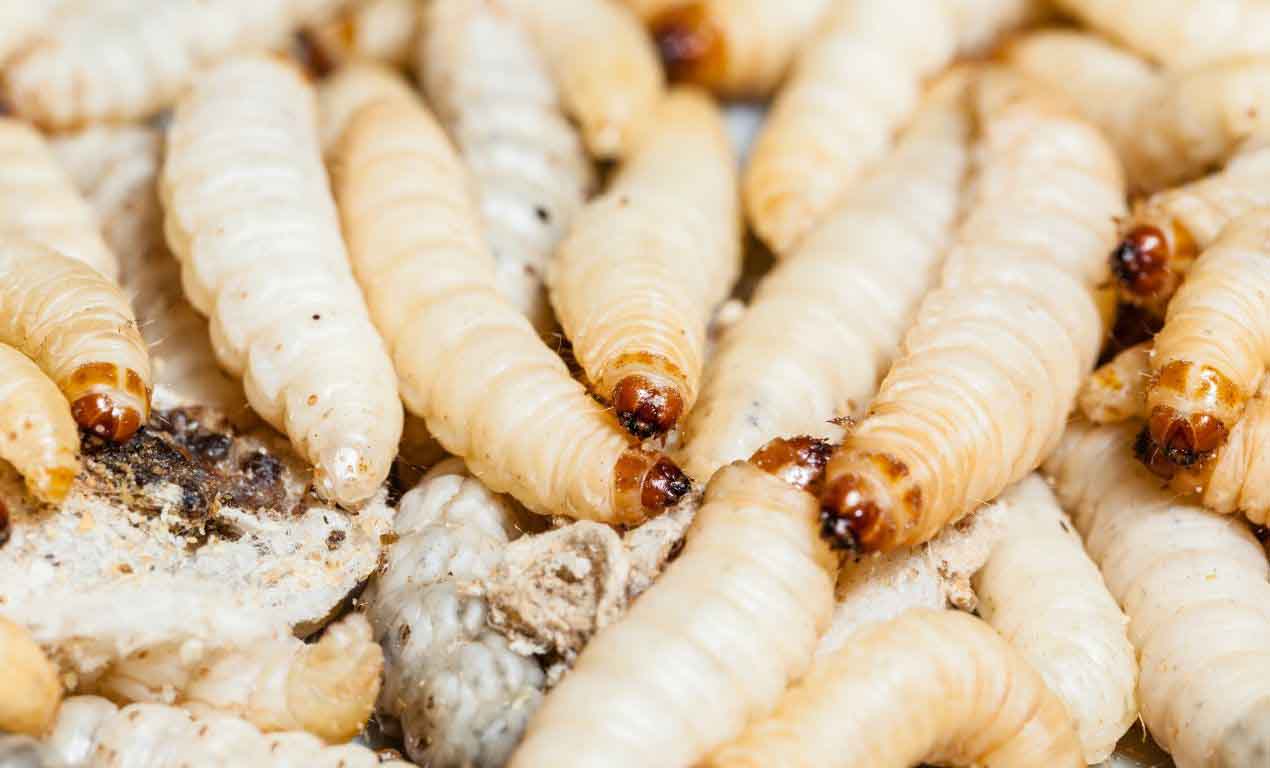
 The parasitic infestation of live animal’s body by fly larvae or maggots gets known as myiasis. These larvae feed on the tissues of the host and create a wound. Flies are known to sit on open sores and lay their eggs. The larvae can also infest unbroken skin. They find their way into the animal’s body through any orifice it finds – ears, nose, and mouth.
The parasitic infestation of live animal’s body by fly larvae or maggots gets known as myiasis. These larvae feed on the tissues of the host and create a wound. Flies are known to sit on open sores and lay their eggs. The larvae can also infest unbroken skin. They find their way into the animal’s body through any orifice it finds – ears, nose, and mouth.
So, are fly eggs dangerous? Yes, fly eggs are dangerous, rather flies lays their eggs intentionally. They are attracted towards open wounds, urine etc. Normally sheep get affected by this but human are also suspectable to this especially during war. People may see ulcers, may feel something is crawling within them etc.
Continue reading to know how dangerous these eggs are.
Little Bit About These Attacks – The Beginning
These attacks are prevalent among livestock worldwide. Humans can attend to their infection and ailment by getting external medical assistance. These animals suffer for long, and if not attended early, may succumb to this infection.
Myiasis varies in the way the infestation occurs and how quickly the infection spreads. Concerning humans, fly lays eggs on any open wounds, on open mouth or lips, face near the nose and food. They get attracted to feces, urine, wet clothing, decomposing food.
Fly Eggs And Life Cycle
Flies are unique since their four developmental stages are very different from each other. They are:
- Eggs are laid by flies in different sizes and locations, depending on their species. Housefly eggs resemble grains of rice, which hatch into larvae within 24 hours of being laid.
- The larvae or grub are tiny pale worms like creatures, which thrive on dead tissue, decaying matter, traces of feces, human excreta, and rotting plants.
- Housefly larvae take around five days to store enough food to move into their next stage of growth. They seek out dry dark, warm corners, create a hard covering on top of their soft bodies to protect their pupal molting stage. The metamorphosis takes around four to six days before the adult emerges.
- Small flies emerge out of this protective shell and soon fly out. Within the next hours, the young flies are ready to breed again! Houseflies live for around 28 days.
History
Myiasis has a long history of causing infection and death through open wounds. These occurred mostly during wars and unhealthy conditions of human living. The most commonly infected animal was sheep. Hence, farmers use various measures to keep the flies at bay, so that laying of eggs gets prevented in the vicinity of their farms.
Maggot Therapy
 Maggots are attributes to feed on dead and rotting cells and tissues. In the pre-antiseptic period, worms got encouragement to clean the wound of humans. In the present day, health practitioners selectively introduced green bottle fly maggots to the festering wound that was not getting cured with available ailments.
Maggots are attributes to feed on dead and rotting cells and tissues. In the pre-antiseptic period, worms got encouragement to clean the wound of humans. In the present day, health practitioners selectively introduced green bottle fly maggots to the festering wound that was not getting cured with available ailments.
The larvae secreted an enzyme to digest the dead cells. Quickly, the rotting and decaying tissues, bacteria, and dead cells get fed by the maggots. This cleaning of the necrotic tissue helped in the healing of the wound. This treatment gets conducted in a controlled environment.
All fly larvae are not selective in their food habits. Proper tissues and cells would also get ingested along with the unhealthy ones.
Signs And Symptoms
Fly larvae enter our bodies in various ways, depending upon the egg-laying site. If it were food, then the eggs would develop into larvae through swallowed food in the stomach, intestine tract, or genitourinary sites. Infection through food leads to gastric or intestinal myiasis.
Some common myiasis and their symptoms are as below:
Cutaneous myiasis: Painful, slow-developing ulcers or boils would develop on the body, which takes a long time to cure.
Nasal myiasis: This causes blockage of the nasal passage with severe irritation. This causes edema of the face and fever. It can turn fatal if treatment not done in time.
Aural myiasis: You feel crawling sensation and buzzing sound if infected in the ear. There is a smelly discharge sometimes. If the infestation is in the middle ear, maggots may even travel to your brain.
Opthalmomiyasis: This is relatively common, which leads to severe irritation, inflammation, and pain. This generally gets caused by a botfly. The ailment leads to glaucoma, retinal detachment, or uveitis.
Wound myiasis: Open wounds during the war, poor economic conditions, mental asylum, old age, lack of treatment are all victims of this disease. Here, the maggot gets inside the human body thro’ festering wounds.
Causes
In sheep: Flies lays eggs near their posterior, which is wet and damp with urine and feces. The eggs hatch into multiple larvae, which quickly create wounds on the body of sheep with their mouth-parts. Through these tiny orifices, these worms get inside their subcutaneous tissues.
The larvae feed on the tissues, which soon becomes septic due to infection. This infection quickly flows into the blood-stream, leading to anorexia, weakness, and sometimes death.
In human: There are three main species of fly which infect the livestock and sometimes human. They are botflies (Oestridae), fleshflies (Sarcophagidae), and blowflies (Calliphoridae). Fleshflies cause intestinal infection thro’ consumption of meat or fruit containing their laid eggs.
There are some flies like human botfly (Dermatobiahominis), sheep fly, horse fly, etc. which requires a host for the larvae to develop. Semi-specificmyiasis gets caused by flies laying eggs in decaying matter and needs a host like open wounds for larva development.
Accidental myiasis: These pseudocyesis get developed bynonparasitichouseflies. When they lay their eggs on food that get eaten, on the open wounds and larvae hatch and start feeding on the tissues, this ailment also occurs when these larvae find their way inside the body thro’ any other orifices.
Diagnosis
Myiasis is often wrongly diagnosed in human beings. Itchiness, swelling, festers, crawling under the skin, discharge from openings are some symptoms that need a proper diagnosis. Intestinal and urinary infection of myiasis is some of the most challenging ailments that do not get easily diagnosed due to the absence of specific symptoms.
Classification
These days, myiasis is classified concerning the part or organ they infect, as follows:
- Dermal, sub-dermal, cutaneous: Here, the symptoms are creeping sensation, where the larvae travel under or through the skin. In furuncular, the larvae remain at one spot and cause boil or lesion.
- Nasopharyngeal: Here, the infection is in the nose, sinuses, or pharynx.
- Ophthalmic or ocular: The infection is in or around the eye.
- Auricular is related to the ear.
- Gastric, intestinal, or rectal are related to the affected parts and digestive system.
- Urogenital relates to the urinary tract and genital infection.
There is another form of classification, where the species of fly and the type of myiasis caused by them, such as:
Obligatory: Here, the fly cannot complete its life cycle without the support of a host. Here the laying of eggs might be specific, semi-specific, or just opportunistic.
Facultative: Here, the larvae gain access to an open wound or an orifice. These types of pests don’t require a host for their procreation.
Accidental: Here, the eggs and larvae pass orally thro’ our food. They pass on to our stomach, intestinal tract, or gut. An infestation could occur at any of these places, provided the larvae finds the environment conducive for them to survive and feed. This depends on the species of fly, and most of the time, such cases go unnoticed.
Prevention
The first control method is called vector control. Here the adult flies are exterminated before they can cause any harm. Some means are:
- Insecticide spray containing organochlorine compound gets used in fly-infested areas, in the livestock areas
- Another method is SIT (Sterile insect technique). Here sterile male flies are introduced, which mates with females to lay unfertilized eggs, which cannot hatch.
- The livestock, especially the sheep, get their tail removed, wool sheared around their tail and between their rear legs. This does not facilitate flies to deposit their eggs and thereby avoid myiasis.
- For humans, the various preventive measures are sanitization of the environment, personal hygiene, removal of fly thro insecticide spray. Soiled clothes must be properly washed, dried, and then ironed. Heat kills fly eggs.
Treatment
Once the myiasis gets established, following treatment gets administered:
- For cutaneous infection, worm created orifices get sealed with petroleum jelly. Due to a lack of oxygen, the larvae surfaces and gets dealt with.
- The pressure is used around the lesion to force the larvae out.
- Once the larvae get removed from the infected area, the area is cleaned with disinfectant and dressed for healing.
- In an acute situation, proper medication must get taken.
- In livestock are treated prophylactically. The slow release of boluses with ivermectin cleanses the area of larvae and also inhibits future infestation in that area.
- Sheep are dipped in pesticides to eradicate the larvae on and near their skin surface.
Conclusion
Flies are a foul creature, which carries disease-causing bacteria on its feet and body. Also, they lay eggs intentionally, depending upon the species, upon food, wounds, near orifices. These lead to ailments among humans and animals, which, if not detected early, could prove fatal.
Once identified with the type myiasis, proper treatment must get provided. Hence, given the facts, fly eggs are dangerous, and preventive measures must be undertaken to keep flies at bay and keep the environment sanitized.
Welcome to my blog. I have been doing pest control for years since my house, garden and pets were always attacked by various kinds of pests and as a result I had to know proper pest control techniques that works. In this blog I share all the tips and tricks that I know and I hope you’ll find it helpful.
